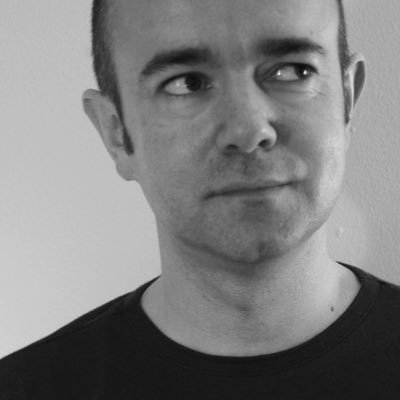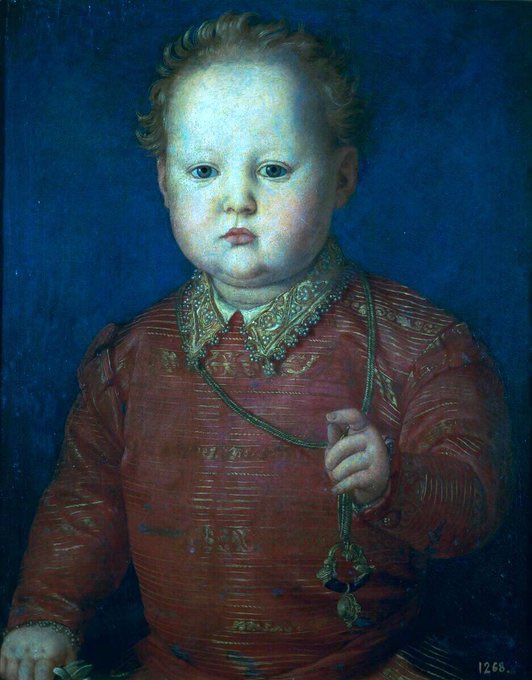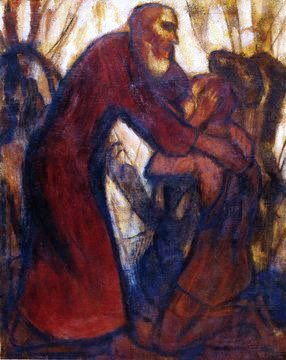Bronzino was seen as a mannerist painter in that he stretched & twisted bodies to achieve an elegant form. His religious images are fine examples of that. The Virgin (1555), Cosimo I de’ Medici (1559), Noli Me Tangere (1561) & Allegory of Happiness (1564)
His mythological portraits are fascinating, in that wanting to be learned, his male sitters inadvertently presented themselves as homoerotic images. Portrait of Andrea Doria as Neptune (1550-5), St John the Baptist (1550-5), The Resurrection (1550) & Francesco I de’ Medici (1551)
Bronzino’s portrait of Colonna is an essay in masculinity, as well as humour. That humour also appears in his ‘baby’ portraits. Stefano IV Colonna (1546), Don Garcia de’ Medici (1550), Holy Family (c1550) & Portrait of a Lady (1550). The latter is one of his warmest works
From 1540-1 Bronzino was working on the fresco of the Chapel of Eleanora di Toledo in the Palazzo Vecchio. To experience this room is a highlight of a visit to Florence. It’s a fine hybrid of his religious & sensual approach
One of Italian art’s most sublime portraits is of Lucrezia Panciatichi where the sitter’s exquisite looks are presented in an elongated lyric fashion. Ugolino Martelli (1535), Portrait of a Young Man (1540), Bartolomeo Panciatichi (1540) & Lucrezia Panciatichi (1540)
Such was his fame that (1929) the Rohlfs Museum was opened in Hagen. In 1937 the Nazis had him expelled from the Prussian Academy & his work was removed from public collections as Entartete Kunst. Monte Tamaro (1935), Artichoke (c1937), Sunflower (1934) & Canna (1932). Fantastic!
His approach was both full of humour & pathos. His enjoyment of a mismatched pair is as powerful as his depiction of a desperate prisoner of war. Couple (1919), From the Weimar Park (1918), Leda & the Swan (1917) & Prisoner (1918)
Blues, greens & reds became really important to him & he was now painting confidently in his own signature style. Village (1913), The Soldier (c1914), Return of the Prodigal Son (1914) & Hexenritt (1916). Images of good & evil marked WWI
From 1910-12 Rohlfs lived in Munich & the Tyrol before returning to Hagen. Dancer with Red Cloak (1912), Two Marrows (1910), Nude (1911) & Nude (1911). Here we see the birth of Rohlfs own unique style.
As Rohlfs examined & tried each style he integrated them into his own. Van Gogh had a big influence on his thinking, as seen in the final landscape here -Lying Figure with Red Trousers (1907), Male Nude (1905), Still Life with Pineapple (1903) & Garden in Soest (c1905)








































